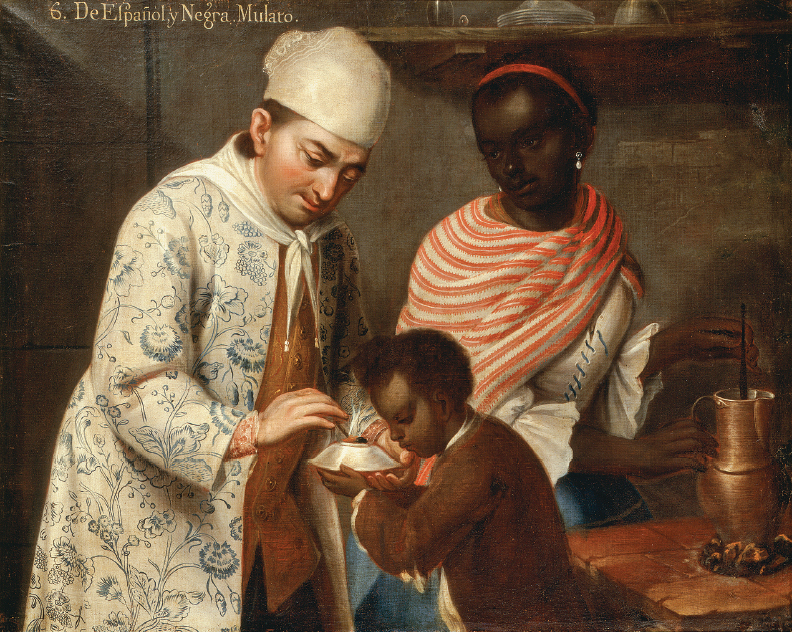Identities and Communities of the Atlantic World
Not only slaves and commodities but also cultural ideas and values — as well as free people of European, African, and American descent — circulated through the eighteenth-
The term Creole referred to people of Spanish ancestry born in the Americas. Wealthy Creoles and their counterparts throughout the Atlantic colonies prided themselves on following European ways of life. Over time, however, the colonial elite came to feel that their circumstances gave them different interests and characteristics from those of their home population. Creole traders and planters increasingly resented the regulations and taxes imposed by colonial bureaucrats, and such resentment would eventually lead to revolution against colonial powers.
Not all Europeans in the colonies were wealthy. Numerous poor or middling whites worked as clerks, shopkeepers, craftsmen, and plantation managers. With the exception of British North America, white Europeans made up a minority of the population. Since European migrants were disproportionately male, much of the population of the Atlantic world descended from unions — forced or through choice — of European men and indigenous or African women. (See “Picturing the Past: Mulatto Painting.”)
Mixed-
British colonies followed a distinctive pattern. There, whole families, rather than individual men, migrated, resulting in a rapid increase in the white population. This development was favored by British colonial law, which forbade marriage between English men and women and Africans or Native Americans. In the British colonies of the Caribbean and the southern mainland, masters tended to leave their mixed-
Converting indigenous people to Christianity was a key ambition for all European powers in the New World. Galvanized by the Protestant Reformation and the perceived need to protect and spread Catholicism, Catholic powers actively sponsored missionary efforts. Catholic religious orders established missions throughout Spanish, Portuguese, and French colonies (see "Impact of European Settlement on the Lives of Indigenous Peoples" in Chapter 14). In Central and South America, large-

CONNECTIONS: Why do you think such paintings were so popular? Who do you think the audience might have been, and why would viewers be fascinated by such images?
The practice of slavery reveals important limitations on efforts to spread Christianity. Slave owners often refused to baptize their slaves, fearing that enslaved people would use their Christian status to claim additional rights. In some areas, particularly among the mostly African-